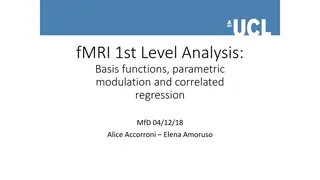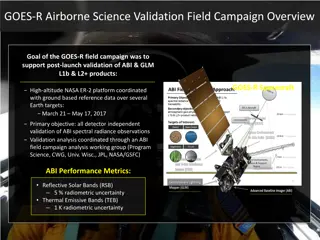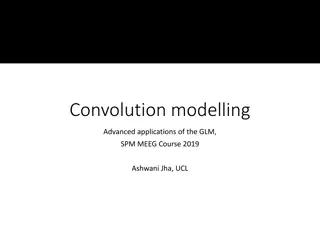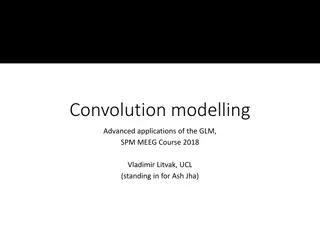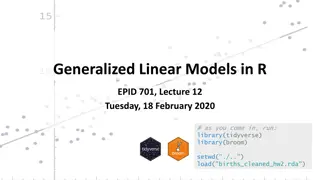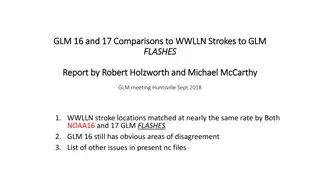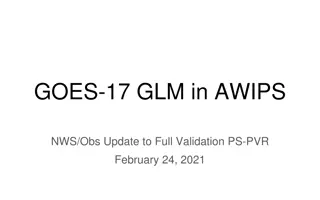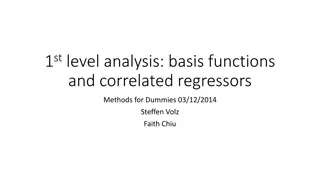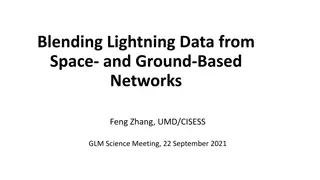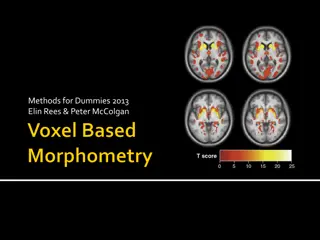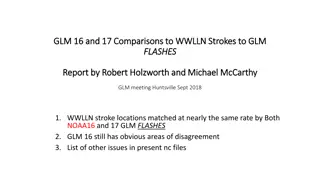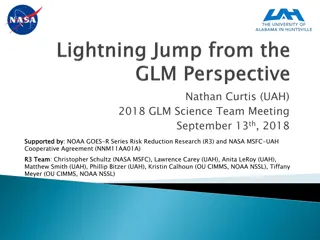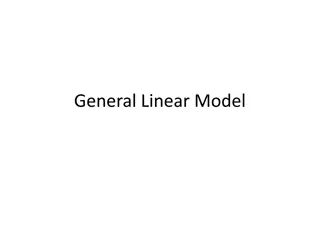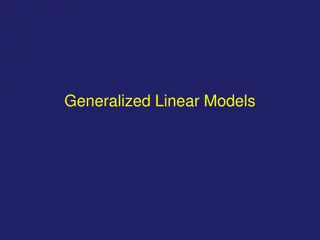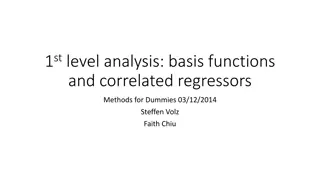
Understanding Generalized Linear Models (GLMs) in Statistics
Explore the concepts of Generalized Linear Models (GLMs) in statistics, the differences from General Linear Models, formal definitions, practical examples, and the role of GLMs in transforming response values for linear relationships.
Download Presentation

Please find below an Image/Link to download the presentation.
The content on the website is provided AS IS for your information and personal use only. It may not be sold, licensed, or shared on other websites without obtaining consent from the author. If you encounter any issues during the download, it is possible that the publisher has removed the file from their server.
You are allowed to download the files provided on this website for personal or commercial use, subject to the condition that they are used lawfully. All files are the property of their respective owners.
The content on the website is provided AS IS for your information and personal use only. It may not be sold, licensed, or shared on other websites without obtaining consent from the author.
E N D
Presentation Transcript
GLMs Before we talk about GENERALIZED Linear Models (GLMS), we need to talk about GENERAL Linear Models (not- GLMs but sound really similar). namNm15
Linear Model ??- residual or error ?? ?? ?0 namNm15 ??
Formal Definition ?1?, ?2?- observed values of covariate variables (i.e. temperature, precipitation) ?? - observed value of the response variable (i.e. tree height) ?0 - y intercept: ? 0 =?0 ?1 parameter applied to the covariate variables ??= ?0+ ?1?1?+ ?2?2?+ namNm15
General Linear Model ? = ??+? ? = 1.205 ?0.216? ln ? = ln 1.205 + 0.216? ? ? = 0.1865 + 0.216? namNm15
General Linear Model 6 5 y = 0.1983x - 0.3216 R = 0.9694 4 3 2 1 0 1 2 3 4 5 6 7 8 9 1011121314151617181920212223242526 -1 namNm15
General Linear Model Can transform the response values to linearize the relationship between the independent variables (covariates and predictors) and the response After transformation, residuals need to be from a normal distribution and be homoscedastic Uses linear regression (least squares) namNm15
Polynomial Regression namNm15
Need More Not all phenomenon follow linear response Not all residuals are normally distributed This leads to: GLMs: Single function, specified regression distribution GAMs: Multiple functions Non-parametric approaches: no assumptions are made about the parameters of the distribution namNm15
GLM Generalized Linear Model Not to be confused with a general linear model Allows a linear model to be related to the response variable via a Link function. Residuals do not have to be normally distributed but do need to be from a defined probability distribution Fit is based on maximum likelihood namNm15
Generalized Linear Models ?? - Response variable ?? - Error Modeled as residuals ??= ?1?1?+ ?2?2?+ ?? Linear model without the intercept ? ?? - Expected value of ?? Predicted value (no error) ? ??=?1?1?+ ?2?2? What to do when ?? is not linear? namNm15
Link Function To Transform ?? ? ? ?? Linear model without the error ?is a link function ? ?? = ? 1(?1?1?+ ?2?x2i+ ) = ?1?1?+ ?2??2?+ namNm15
Common Functions in R Error Distribution (Link Function) Binomial (link = "logit") True/false, alive/dead, present/absent Gaussian (link = "identity") Continuous, normal Gamma (link = "inverse") Seed distribution, distance from Poisson (link = "log") Counts namNm15
Gaussian Distribution namNm15 Wikipedia AKA Gaussian Distribution
Binomial namNm15 Number of successes of yes/no experiments Wikipedia
Gamma Distribution namNm15 Wait times, seed distribution, etc. Wikipedia
Poisson namNm15 Number of events in time T, k=number of occurrences Wikipedia

